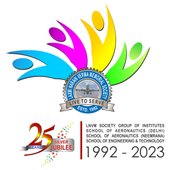aeronautical engineering
Aeronautical engineering is a branch of engineering that deals with the design, development, construction, and maintenance of aircraft, spacecraft, and related systems. It involves the study of aerodynamics, propulsion systems, materials science, structural analysis, avionics, and flight mechanics.
Here's an overview of what you can expect from a typical aeronautical engineering course:
Fundamental Engineering Concepts: Aeronautical engineering courses typically begin with foundational subjects such as mathematics, physics, and mechanics. This provides students with the necessary background to understand more advanced topics.
Aerodynamics: Aerodynamics is a core aspect of aeronautical engineering. Students learn about the behavior of gases, fluid flow, airfoil design, and the principles governing the lift and drag of aircraft.
Propulsion Systems: Understanding how aircraft engines work is crucial for aeronautical engineers. Courses cover topics such as thermodynamics, propulsion systems, jet engines, and rocket propulsion.
Materials and Structures: Aeronautical engineers must be familiar with the materials used in aircraft construction and their properties. This includes studying materials science, structural analysis, stress analysis, and fatigue testing.
Flight Mechanics: Flight mechanics involves the study of the motion of aircraft in various conditions. This includes stability and control, aircraft performance, flight dynamics, and the behavior of aircraft in different flight regimes.
Avionics and Control Systems: Avionics refers to the electronic systems used in aircraft, including navigation, communication, and control systems. Aeronautical engineering courses cover topics such as flight instrumentation, autopilot systems, and electronic warfare systems.
Aircraft Design: Designing aircraft involves integrating knowledge from various disciplines to create efficient and safe flying machines. Students learn about conceptual design, aerodynamic optimization, structural design, and systems integration.
Specializations: Depending on the program, students may have the opportunity to specialize in specific areas such as aerospace systems, unmanned aerial vehicles (UAVs), space exploration, or rotorcraft.
Practical Experience: Many aeronautical engineering programs incorporate laboratory work, projects, and internships to provide students with hands-on experience. This could involve working with simulators, conducting experiments, or participating in design projects.
Capstone Projects: Some programs culminate in a capstone project where students work in teams to design, build, and test an aircraft or aerospace system. This allows students to apply their knowledge and skills to real-world problems.
Overall, aeronautical engineering courses aim to equip students with the knowledge, skills, and practical experience needed to pursue careers in the aerospace industry, including roles in aircraft design, manufacturing, testing, maintenance, and research and development.
| Tags: |
